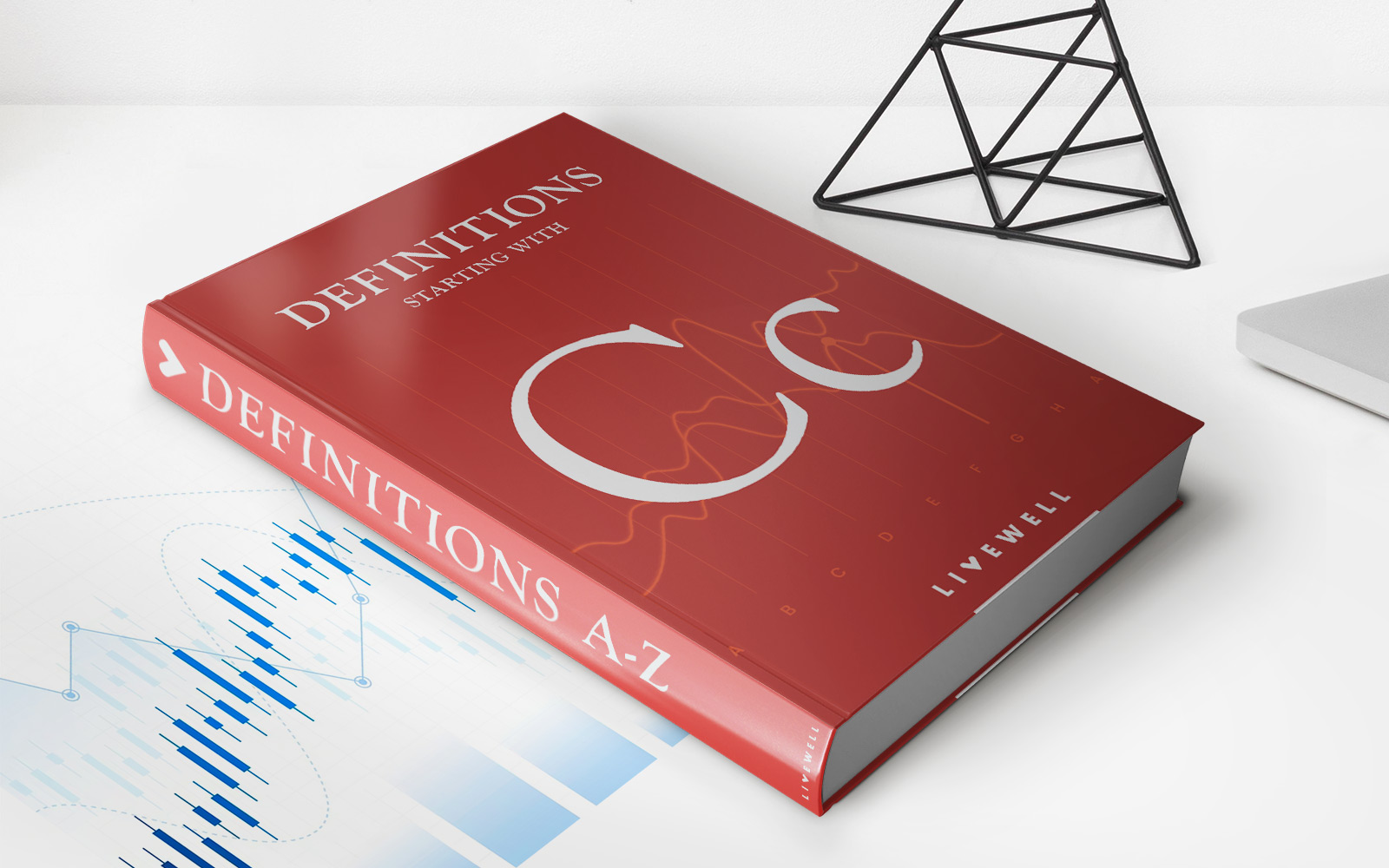Home>Finance>What Distinguishes A Savings Account From A Certificate Of Deposit?


Finance
What Distinguishes A Savings Account From A Certificate Of Deposit?
Modified: March 1, 2024
Discover the key differences between a savings account and a certificate of deposit in the world of finance. Choose the right option for your financial goals today!
(Many of the links in this article redirect to a specific reviewed product. Your purchase of these products through affiliate links helps to generate commission for LiveWell, at no extra cost. Learn more)
Table of Contents
- Introduction
- Definition of a Savings Account
- Definition of a Certificate of Deposit (CD)
- Key Features of a Savings Account
- Key Features of a Certificate of Deposit
- Interest Rates
- Access to Funds
- Minimum Deposit and Balance Requirements
- Maturity Date and Early Withdrawal Penalties
- Federal Deposit Insurance Corporation (FDIC) Coverage
- Choosing Between a Savings Account and a Certificate of Deposit
- Conclusion
Introduction
When it comes to saving money, there are various options available, each with its own characteristics and benefits. Two common choices for individuals looking to grow their savings are savings accounts and certificates of deposit (CDs). While both options offer a secure way to save money, they differ in terms of access to funds, interest rates, and other features. Understanding the differences between a savings account and a certificate of deposit can help you make an informed decision about which option is best suited for your financial goals.
In this article, we will explore the key features of savings accounts and certificates of deposit and discuss what sets them apart. By understanding the nuances of these financial tools, you will be better equipped to make a choice that aligns with your financial needs and objectives.
Whether you’re just starting your savings journey or looking to grow your existing savings, it’s important to have a clear understanding of the benefits and limitations of different savings options. So, let’s dive into the definitions, features, and considerations for both savings accounts and certificates of deposit.
Definition of a Savings Account
A savings account is a basic financial product offered by banks and credit unions that allows individuals to deposit and save money while earning a modest amount of interest. It serves as a convenient and secure place to store funds that are not immediately needed for everyday expenses.
Unlike a checking account, which is primarily used for day-to-day transactions, a savings account is designed for long-term saving and accrual of interest. It provides individuals with a means to accumulate wealth over time by earning interest on their deposited funds.
Opening a savings account is relatively straightforward. It usually requires providing identification, a minimum initial deposit, and agreeing to the terms and conditions set by the financial institution. Once the account is established, individuals can deposit or withdraw funds as needed, within certain limitations.
Savings accounts typically come with certain benefits and features. One key feature is the ability to earn interest on the account balance. The interest rate offered by the bank or credit union may vary and is usually compounded either daily, monthly, or annually. While the interest rates on savings accounts are generally lower than other investment options, they provide a low-risk and easily accessible way to grow your savings.
Another important feature of savings accounts is that they are often covered by deposit insurance. In the United States, for example, accounts held at FDIC-insured banks are insured up to $250,000 per depositor, providing added peace of mind.
In addition, savings accounts typically offer easy access to funds. Account holders can withdraw money in various ways such as ATM withdrawals, electronic transfers, or in-person withdrawals at a branch. However, there are usually limitations on the number of withdrawals or transfers that can be made per month without incurring additional fees.
Overall, a savings account provides individuals with a safe and flexible way to save money while earning a modest amount of interest. It can be an ideal choice for those who want liquidity and easy access to their funds while still earning some return on their savings.
Definition of a Certificate of Deposit (CD)
A certificate of deposit (CD) is a fixed-term financial product offered by banks and credit unions that allows individuals to earn a higher interest rate on their savings in exchange for locking the funds away for a specified period of time, known as the maturity date. CDs are considered low-risk investment options that provide a guaranteed return on investment.
Unlike a savings account, which offers flexibility in terms of deposit and withdrawal, a CD requires individuals to deposit a certain amount of money for a predetermined period, typically ranging from a few months to several years. During this time, the money deposited in a CD cannot be accessed without incurring penalties.
CDs are attractive to individuals who have a specific savings goal in mind and are willing to forgo immediate access to their funds in exchange for higher interest rates. The interest rates on CDs are typically higher than those offered on savings accounts due to the committed nature of the investment.
When opening a CD, the individual and the financial institution agree upon the term and the interest rate. The interest can be paid out periodically, such as monthly or annually, or can be added to the principal and paid out at the end of the CD’s term.
One key feature of CDs is the fixed interest rate. This means that the rate is locked in at the time of opening the CD and remains constant throughout the term. This stability allows individuals to calculate their earnings and plan ahead.
At the end of the CD’s term, individuals have the option to renew the CD for another term, withdraw the funds, or transfer the funds to a different account. If the funds are withdrawn before the maturity date, individuals may face penalties, which can include forfeiture of the interest earned or a percentage of the principal amount.
CDs are also typically covered by deposit insurance, providing protection for the invested funds up to a certain limit, depending on the jurisdiction and regulatory framework.
Overall, certificates of deposit offer individuals a way to earn a higher interest rate on their savings by committing to a fixed term. They provide a low-risk investment option with guaranteed returns, making them an attractive choice for individuals with a specific savings goal and a willingness to lock away their funds for a period of time.
Key Features of a Savings Account
Savings accounts offer a range of features that make them a popular choice for individuals looking to save money and earn interest. Here are some key features of a savings account:
- Interest Earnings: One of the main benefits of a savings account is the ability to earn interest on your deposited funds. While interest rates may vary, savings accounts typically provide a modest return on your savings, allowing your money to grow over time.
- Liquidity: Savings accounts are highly liquid, meaning you can easily access your funds when needed. Whether it’s through ATM withdrawals, electronic transfers, or in-person withdrawals at a branch, you can quickly and conveniently withdraw money from your savings account for any immediate expenses or emergencies.
- No Fixed Term: Unlike certificates of deposit, savings accounts do not have a fixed term. You have the flexibility to deposit or withdraw funds at any time, without incurring penalties or restrictions, as long as you stay within the monthly withdrawal limit set by the financial institution.
- No Minimum Deposit: Many savings accounts have no or low minimum deposit requirements, making them accessible to individuals with varying amounts of savings. This allows you to start saving even with a small initial deposit.
- Easy Accessibility: Savings accounts are generally easy to open and manage. Most banks and credit unions offer online and mobile banking options, allowing you to monitor your account, track your savings progress, and make transactions conveniently from anywhere.
Additionally, savings accounts often come with the benefit of deposit insurance. In the United States, for example, savings accounts held at FDIC-insured banks are insured up to $250,000 per depositor, providing an extra layer of security for your savings.
Savings accounts serve as a versatile tool for individuals to save money, earn interest, and have quick access to their funds. Whether you’re saving for a specific goal or building an emergency fund, a savings account offers flexibility and convenience to help you meet your financial objectives.
Key Features of a Certificate of Deposit
Certificates of Deposit (CDs) offer several key features that make them an attractive option for individuals looking to earn higher interest rates and grow their savings. Here are some key features of a certificate of deposit:
- Higher Interest Rates: One of the primary advantages of CDs is the potential to earn higher interest rates compared to traditional savings accounts. The fixed-term nature of CDs allows financial institutions to offer more competitive interest rates, providing an opportunity to maximize your savings.
- Fixed Term: Unlike savings accounts, CDs have a fixed term, ranging from a few months to several years. This means that once you open a CD, you commit to keeping your funds deposited for the specified duration. This fixed term allows for precise planning and allows individuals to lock in a favorable interest rate for the entire duration of the CD.
- Guaranteed Returns: With a CD, you can expect guaranteed returns at maturity. The interest rate is agreed upon at the time of opening the CD, and you will receive the full principal amount plus accrued interest when the CD reaches its maturity date.
- Less Risk: CDs are generally considered low-risk investments because they are backed by the financial institution offering them. This means that even if the bank or credit union were to experience financial difficulties, your invested funds, up to the insured limit, would still be protected.
- Penalties for Early Withdrawal: Unlike savings accounts, withdrawing funds from a CD before its maturity date typically results in penalties. These penalties may include forfeiting a portion of the accrued interest or even a percentage of the principal amount. It’s important to consider your financial needs and commit to a CD term that aligns with your saving goals and liquidity requirements.
Moreover, CDs are also covered by deposit insurance in many jurisdictions. For example, in the United States, CDs held at FDIC-insured banks are insured up to $250,000 per depositor, providing added protection for your invested funds.
Certificates of Deposit can be an excellent choice for individuals who have a specific savings goal and are looking to earn higher interest rates without taking on significant risk. By understanding the key features of CDs, you can make an informed decision about incorporating them into your savings portfolio.
Interest Rates
Interest rates play a crucial role in both savings accounts and certificates of deposit, as they determine the return you will earn on your deposited funds. However, there are differences in how interest rates are applied to these two financial products.
Savings Accounts:
In savings accounts, interest rates are typically lower compared to CDs, but they often come with more flexibility. The interest rate on a savings account may be variable, meaning that it can change over time based on market conditions and the policies of the financial institution. These rates are usually compounded either daily, monthly, or annually, allowing your savings to grow over time.
Financial institutions set their own interest rates for savings accounts, and these rates can vary among different banks or credit unions. Some institutions may offer higher rates as an incentive to attract more deposits, while others may have lower rates but provide additional benefits or perks. It’s important to compare interest rates among different providers to find the best option for your savings goals.
Certificates of Deposit:
In contrast, certificates of deposit generally offer higher interest rates compared to savings accounts. The interest rate for a CD is usually fixed at the time of opening, meaning it remains constant throughout the term of the CD. This allows you to know exactly how much interest you will earn over the CD’s duration, providing a predictable return on your investment.
CD interest rates are set by the financial institution based on various factors such as prevailing market rates, the length of the CD term, and the amount of deposit. Longer-term CDs often have higher interest rates to compensate for the longer lock-in period. It’s important to shop around and compare rates offered by different banks or credit unions to ensure you are getting the most competitive rate for your investment.
It’s worth noting that interest earned on both savings accounts and CDs is subject to taxation. The specific tax implications may vary depending on your jurisdiction, so it’s advisable to consult with a tax professional for personalized advice.
Ultimately, when choosing between a savings account and a certificate of deposit, understanding the different interest rates and how they align with your financial goals is crucial. Consider your desired level of risk, liquidity needs, and the potential return on your investment to make an informed decision.
Access to Funds
Access to funds is an important consideration when choosing between a savings account and a certificate of deposit (CD). While both options provide a secure place to save money, they differ in terms of flexibility and access to funds.
Savings Accounts:
Savings accounts offer much greater flexibility and accessibility when it comes to accessing your funds. With a savings account, you have the convenience of being able to withdraw money whenever you need it. Banks and credit unions typically provide various methods for accessing your savings, including ATM withdrawals, electronic transfers, and in-person withdrawals at a branch. This allows you to easily access funds for daily expenses, emergencies, or any other financial needs that may arise.
However, it’s important to note that most savings accounts come with certain limitations on the number of withdrawals or transfers you can make per month. This limit is set by the financial institution and is typically in compliance with federal regulations. If you exceed the monthly transaction limit, you may incur additional fees or penalties. Nevertheless, savings accounts still offer the ability to access your funds with relative ease and convenience.
Certificates of Deposit:
In contrast, CDs are designed for individuals who have a longer-term saving goal and are willing to lock away their funds for a specified period. Once you open a CD, your money is committed for the duration of the fixed term, which can range from a few months to several years. This means that accessing your funds before the CD matures can result in penalties, such as loss of interest or a percentage of the principal amount.
While some financial institutions may offer options for early withdrawal, they often come with strict terms and penalties. It’s crucial to carefully consider your financial needs and choose a CD term that aligns with your liquidity requirements. For individuals who can afford to leave their funds untouched for a longer period, CDs can provide an opportunity to earn higher interest rates and maximize savings.
Ultimately, the decision between a savings account and a CD depends on your financial goals and the level of flexibility you require in accessing your funds. If you anticipate needing quick access to your savings, a savings account offers more convenience. On the other hand, if you have a specific savings goal and can afford to lock away your funds, a CD can provide higher interest rates in exchange for limited access to your funds.
Minimum Deposit and Balance Requirements
When considering a savings account or a certificate of deposit (CD), it is important to be aware of the minimum deposit and balance requirements associated with each option. These requirements can vary depending on the financial institution and the specific account or CD you choose.
Savings Accounts:
Savings accounts generally have low or no minimum deposit requirements, making them accessible to individuals with varying levels of savings. Some financial institutions do not impose any minimum balance requirements, while others may require a minimum initial deposit to open the account. It is important to check with the specific bank or credit union to determine the minimum deposit requirements for the savings account you are interested in.
In addition to the minimum deposit requirement, savings accounts may also have minimum balance requirements to avoid service fees. These minimum balance requirements vary between financial institutions and can range from a few dollars to several thousand dollars. Falling below the minimum balance may result in service charges or the downgrade of your account to a lower-tier savings account that may offer fewer benefits.
Certificates of Deposit (CDs):
CDs typically have higher minimum deposit requirements compared to savings accounts. The minimum deposit required to open a CD varies depending on the financial institution and the specific terms of the CD. Generally, the amount required for a CD deposit is higher than that of a savings account, often ranging from a few hundred to several thousand dollars.
It is important to note that the minimum deposit for a CD is typically a one-time requirement. Once you have met the minimum deposit requirement and opened the CD, there is no further obligation to contribute additional funds during the duration of the CD term.
Overall, it is essential to consider your available funds and the minimum deposit and balance requirements of both savings accounts and CDs when making a decision. If you have limited funds to deposit initially, a savings account may be a more suitable choice, as it usually has lower minimum deposit and balance requirements. On the other hand, if you have a larger sum of money that you can commit for a fixed term, a CD may offer higher interest rates and the opportunity to grow your savings.
Maturity Date and Early Withdrawal Penalties
One significant difference between a savings account and a certificate of deposit (CD) is the concept of maturity date and the associated penalties for early withdrawals.
Savings Accounts:
Savings accounts do not have a maturity date. Essentially, this means that your funds in a savings account are available to you at any time without restrictions. You can make deposits and withdrawals freely according to your financial needs, and there are no penalties or charges for accessing your savings account balance. This flexibility makes savings accounts a convenient choice for individuals who require easy access to their funds for daily expenses or unexpected emergencies.
Certificates of Deposit:
CDs, on the other hand, have a fixed term and a designated maturity date. The maturity date is the point at which your CD reaches its full term, and you are entitled to receive the entire principal amount along with any accrued interest. The term of a CD can vary, typically ranging from a few months to several years.
Early withdrawal from a CD refers to accessing the funds before the specified maturity date. If you choose to withdraw your money from a CD before it reaches maturity, you usually face penalties. The penalties for early withdrawal can vary depending on the financial institution and the terms of the CD. Common penalty structures include forfeiting a portion of the accrued interest or subjecting the principal amount to a percentage-based charge.
It’s important to carefully review the terms and conditions of the CD before opening one to understand the specific penalties for early withdrawal. Be mindful of the potential impact on your return on investment and factor in the possibility of needing immediate access to your funds before committing to a CD term.
Some financial institutions may offer more flexible CD options, such as a “no-penalty CD” or a “liquid CD,” where you can withdraw your funds without incurring penalties under certain conditions. These options typically have slightly lower interest rates than regular CDs, but they provide a level of flexibility for those who anticipate a potential need for early access to their funds.
Ultimately, the maturity date and potential early withdrawal penalties associated with CDs should be carefully considered based on your financial goals and liquidity needs. If you have a specific savings goal and can commit to leaving your funds untouched for a fixed term, a CD can provide higher interest rates. However, if you require more flexibility and immediate access to your savings, a savings account may be a more suitable option.
Federal Deposit Insurance Corporation (FDIC) Coverage
One important aspect to consider when choosing between a savings account and a certificate of deposit (CD) is the level of protection provided by the Federal Deposit Insurance Corporation (FDIC).
Savings Accounts:
Savings accounts held at banks that are members of the FDIC are protected by deposit insurance. The FDIC is an independent agency of the United States government that provides deposit insurance coverage up to $250,000 per depositor, per insured bank. This means that if a bank were to fail and become unable to return your deposits, the FDIC would step in to reimburse your insured funds up to the specified limit. The FDIC coverage provides financial security and peace of mind to individuals saving their money in savings accounts.
It is important to note that the $250,000 limit is per depositor, not per account. If you have multiple savings accounts at the same bank, the total combined balance across all accounts is insured up to $250,000. If you have accounts at different FDIC-member banks, each individual bank is insured up to the $250,000 limit for each depositor.
Certificates of Deposit:
CDs are also covered by FDIC insurance as long as they are held at FDIC-member banks. The insurance coverage for CDs follows the same guidelines as savings accounts. The principal amount of your CD, along with any accrued interest, is insured up to $250,000 per depositor, per bank.
It’s essential to ensure that the bank where you open a CD is a member of the FDIC to benefit from the deposit insurance coverage. Many banks prominently display the FDIC logo on their website and in their physical branches to indicate their membership.
FDIC insurance coverage provides protection against the risk of losing your savings in the event of a bank failure. It is important to keep track of your deposits across different accounts and banks to ensure that your total savings amount does not exceed the insured limit.
It is worth noting that FDIC insurance coverage applies only to U.S. banks and U.S. dollar deposits. If you are considering opening an account at a non-U.S. bank or have deposits in a foreign currency, it is advisable to research and understand the deposit insurance coverage provided by the respective country’s regulatory framework.
Before opening a savings account or CD, it is recommended to inquire about FDIC membership and coverage at the financial institution. Understanding the level of protection available can help you make an informed decision and ensure the safety of your savings.
Choosing Between a Savings Account and a Certificate of Deposit
When deciding between a savings account and a certificate of deposit (CD), it’s important to evaluate your financial goals, risk tolerance, and liquidity needs. Here are some factors to consider in making the right choice:
- Financial Goals: Consider your short-term and long-term financial goals. If you have a specific savings goal or a large upcoming expense, such as a down payment for a home or a wedding, a CD may be an appropriate choice. CDs allow you to lock in a higher interest rate for a fixed term, helping your savings grow. On the other hand, if you are saving for irregular expenses or want the flexibility to deposit and withdraw funds as needed, a savings account might be a better fit.
- Risk Tolerance: CDs are considered low-risk investments because they offer guaranteed returns, provided you hold them until maturity. If you are risk-averse and prefer the security of knowing exactly how much interest you will earn, a CD can be a suitable option. Savings accounts, while also low-risk, offer more flexibility but may have lower interest rates.
- Liquidity Needs: Consider how soon you may need access to your funds. Savings accounts provide easy access to your money without any penalties for withdrawals. This makes them ideal for emergency funds or everyday expenses. CDs, on the other hand, have fixed terms and early withdrawal penalties. If you can commit to leaving your funds untouched for the specified period, a CD can provide higher interest rates, but they may not be the best choice if immediate liquidity is required.
- Interest Rates: Compare the interest rates offered by savings accounts and CDs. Savings accounts generally have lower interest rates but offer more flexibility. CDs generally have higher interest rates, especially for longer terms, but require locking your funds away for a fixed period. Consider the potential return on investment and evaluate if the higher interest rates of a CD outweigh the restricted access to your savings.
- Minimum Deposit and Balance Requirements: Take into account the minimum deposit and balance requirements for both savings accounts and CDs. Some savings accounts have low or no minimum deposit requirements, while CDs typically have higher minimum deposit requirements. Ensure that you can meet these requirements before making a decision.
Ultimately, the choice between a savings account and a CD depends on your individual financial situation and preferences. If you prioritize liquidity, accessibility, and flexibility, a savings account may be the better option. If you have specific savings goals, are willing to forgo immediate access to your funds, and seek higher interest rates, a CD might be more suitable. It can also be beneficial to have a combination of both savings accounts and CDs to align with different financial objectives.
Consider consulting with a financial advisor who can provide personalized guidance based on your specific circumstances and help you make an informed decision that aligns with your financial goals and needs.
Conclusion
Choosing between a savings account and a certificate of deposit (CD) depends on your personal financial goals, risk tolerance, and liquidity needs. By understanding the key features and differences between these two options, you can make an informed decision that aligns with your specific circumstances.
Savings accounts provide easy accessibility to your funds, lower minimum deposit requirements, and the flexibility to deposit and withdraw money as needed. They are suitable for individuals who require liquidity and immediate access to their savings, such as emergency funds and day-to-day expenses. While savings accounts offer lower interest rates compared to CDs, they still provide a secure way to grow your savings over time.
On the other hand, CDs provide higher interest rates, the potential for greater returns, and a fixed term that allows you to lock in a specific interest rate. CDs are better suited for individuals with specific savings goals and the ability to leave their funds untouched for a specified duration. They offer a low-risk investment option with guaranteed returns at maturity, but may have early withdrawal penalties if funds are accessed before the CD reaches its designated maturity date.
When making a decision, it’s important to carefully consider factors such as financial goals, risk tolerance, liquidity needs, interest rates, and minimum deposit requirements. You may also choose to have a combination of both savings accounts and CDs to cater to different financial objectives and timeframes.
Lastly, ensure that the financial institution you choose for either a savings account or a CD is a member of the Federal Deposit Insurance Corporation (FDIC) to provide an additional layer of protection for your deposited funds.
Ultimately, the choice between a savings account and a certificate of deposit should align with your unique circumstances and financial objectives. Consider seeking advice from a financial professional to help you evaluate and make the best decision based on your specific needs.














